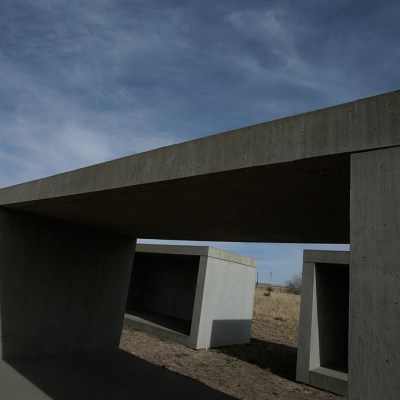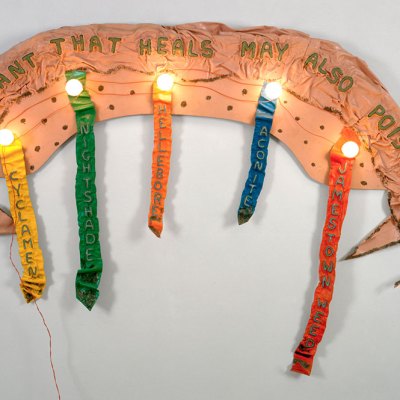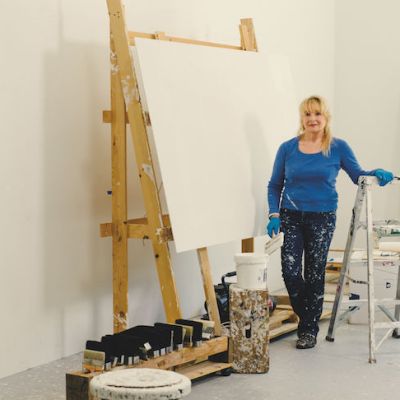Some artists are rich and resonant enough to yield generations of reinterpretation. Picasso, Duchamp and Brancusi are such. But Donald Judd is that rare bird who inspires generations of rejection. First came the refusal of form, of geometry, in which post-minimalists like Robert Smithson swapped Judd’s pristine cubes for heaps of matter. Then came the anti-war movement, which refused him as the laureate of technological rationality and violence. And then came the feminist refusal, one that damned his work as a projection of masculine power. Of course, Judd wasn’t the only minimalist (though to some he was a bad epitome) and the style did affect a fundamental revision of sculpture that all serious artists must still reckon with. But since its time, minimalism has attracted more hostile revisions than unqualified support. It’s all the stranger, therefore, to find Judd headlining at the Museum of Modern Art so soon after it unveiled an expanded rehang intended to diversify the displays away from unapologetic white men. Is this just an accident? A mistake? Perhaps a sign that – more than 30 years since the last major American retrospective of his work – it’s really possible to see Judd with new eyes.
Certainly, MoMA presents Judd without apology. Here is the resolutely canonical figure in a concise but ample four room display that has no patience for complication. One of the well-worn lines of attack against Judd has been the proximity of his art to furniture, and the question of its status as art. His late forays into furniture production – and the wide popularity of a minimalist design aesthetic – only muddied the issue. One could imagine a retrospective that might selectively reframe Judd around that question, and that might therefore proceed with hindsight, with that later furniture in mind at the beginning. Instead, MoMA shows us the received Judd; the Judd that emerges from abstract painting and formalist criticism of the late 1950s; the Judd whose ‘specific objects’, as he termed them, did away with the doctrine of medium specificity, that prim notion that paintings should be paintings and sculptures be sculptures. In the opening works you see him bulking out his paintings into fat slabs carved deep with almost sculptural relief. The sculptures that quickly follow are similarly massy, with matt surfaces and layers of paint that fail to hide the grain of their simple wooden construction. This is the minimalism of honest quiddity. As Frank Stella said of his own paintings, ‘What you see is what you see.’
It is also the Judd that feels closest to the artist’s own early statements. Yet as the critic Rosalind Krauss was the first to point out, Judd in theory and Judd in practice are not the same. What is remarkable about his mature minimalism (his style of 1965 onwards) is its chimerical quality. There is an untitled work from 1969, for example, that is most assuredly not what you see. A sequence of four pierced boxes, it is installed in MoMA so that the matt of its anodised aluminium exterior first confronts visitors and projects an obdurate presence, yet from the side it opens up entirely to flaunt shimmering, aqueous sheets of Plexiglas. I say ‘flaunt’ advisedly: some of the most interesting commentary around Judd has pondered over how sexy it all is, and just exactly what kind of sexy it is. Works like this have a quality of stage magic or striptease, but earlier pieces show the effect emerging out of attempts to frustrate modernist attempts to perceive ideal forms, or to comprehend their inner nature. When closed forms are evidently empty, cloudy surfaces or perforations confuse our understanding of them. When dull, heavy, opaque surfaces enclose the interior entirely, we’re nagged by the question of whether the object is dense and weighty or relatively light.
Untitled (1969), Donald Judd. Saint Louis Art Museum. © 2020 Judd Foundation/Artists Rights Society (ARS), New York

All these effects are resolutely sculptural, yet Judd is one of those minimalists – Flavin is another – who learned much from painting. It isn’t simply his gleeful display of colour and the flat planes of his geometric forms that betray this, it’s all kinds of other qualities of framing and conjuring with pictorial space. An untitled work from 1966 is typical in this regard: seen laterally, it presents as a sequence of rectangular green frames; frontally, however, the eye fuses the frames into a receding tunnel of softly modulated tones. Paradoxically, if Judd is a painter, he is one who pushes against the period’s modernist emphasis on flatness to conjure deep space.
While conversations about minimalism inevitably crowd around formal matters, and conversations around Pop latch on to content, Judd’s art is a reminder of how closely related were those two styles in the early 1960s, and how both were preoccupied with the commodity – at least as Marx imagined it. Such things were ‘very strange’, wrote Marx, ‘mystical’, and if imagining an everyday instance of that is difficult, Judd’s objects, with their seductive sheen and stage-magic effects, are supreme examples. He is an ancestor of Jeff Koons: both might be – as the critic Hal Foster once said of Koons – triumphal defeatists. Though if Koons sees no space in our culture that is free of commodities, nothing beyond the acquisition of shiny objects – which he decadently celebrates – Judd sees some salvation in the work of contemplating abstract forms.
And maybe also in fabrication: while Judd is famous for having commissioned industrial fabricators to create his mature sculpture, the simple, bare wooden materials of some of the sculptures do hint that maybe you, too, could knock them together in your shed; you, too, could conceptualise something challenging and beautiful. And for this contentedly male reviewer, that’s thrilling – as is the show, from beginning to end. It’s important work and yet it does feel old, an outburst from a moment of lordly confidence in American capitalism, just before it was mired in war and economic slump. At the time of writing, disease has prematurely closed MoMA’s doors on Judd, and disease looks likely to cut down the American Prometheus again. It feels terribly sad and uncannily repetitious.
‘Judd’ is at the Museum of Modern Art, New York, until 9 January 2021 (exhibition dates extended).
From the May 2020 issue of Apollo. Preview and subscribe here.



